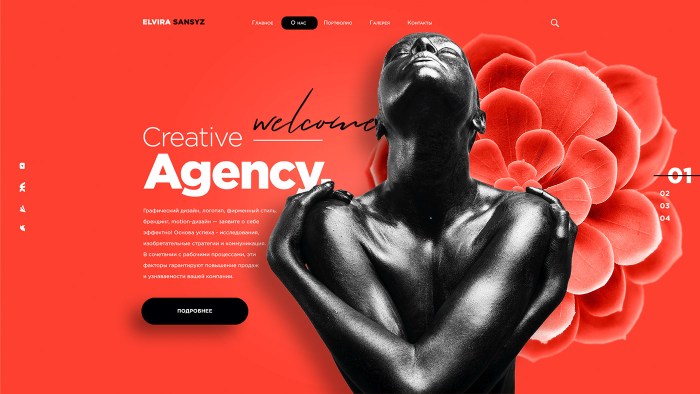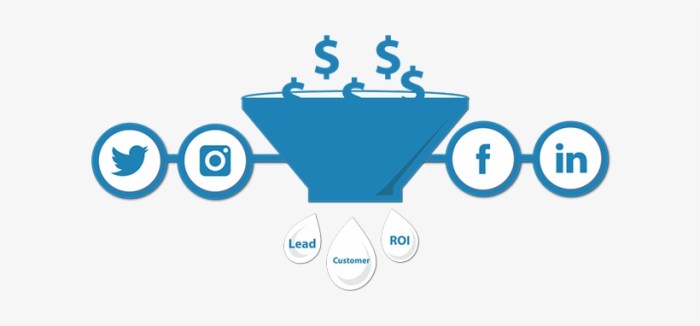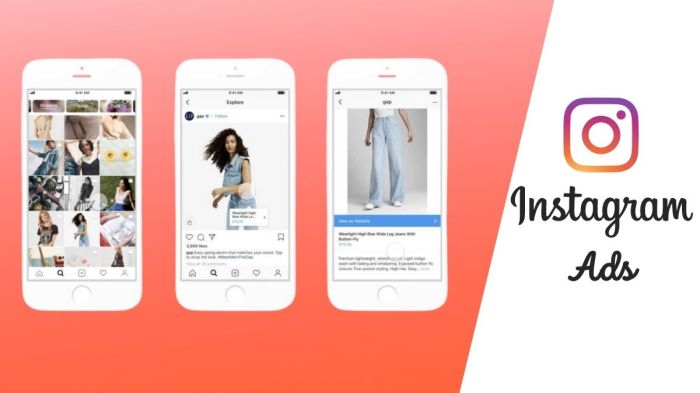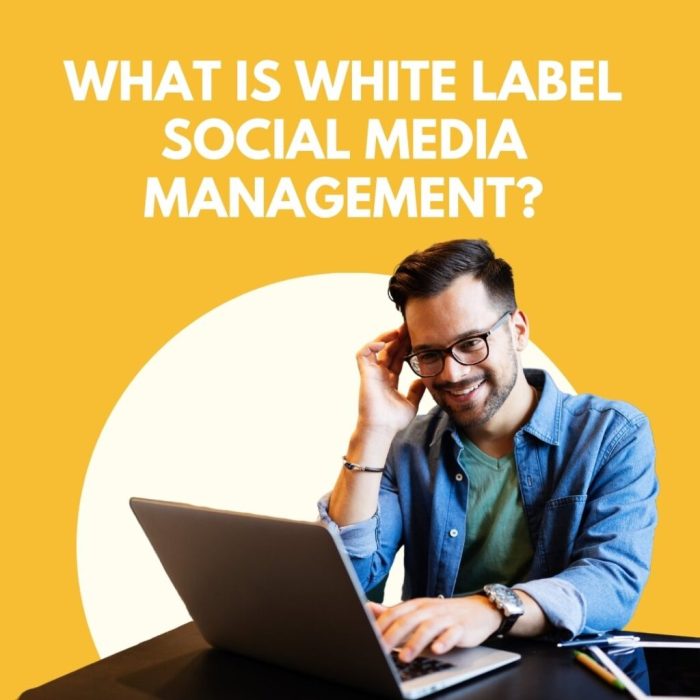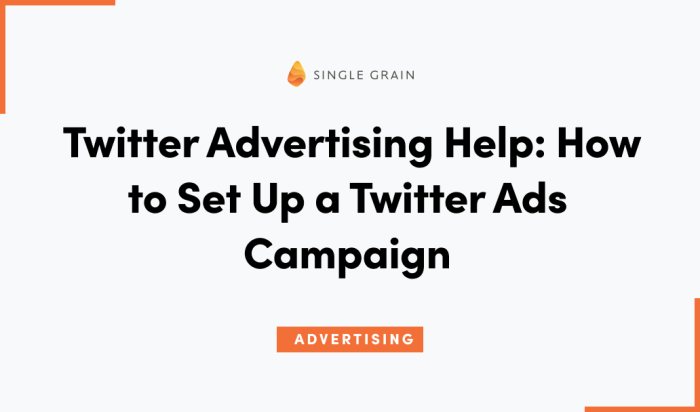Paid Social Media Service A Comprehensive Guide
Paid social media service is a powerful tool for businesses to connect with their target audience. This guide explores various aspects, from defining different service types to crafting effective strategies and measuring results. Understanding the nuances of paid social media campaigns is key to achieving optimal ROI.
The guide delves into the intricacies of paid social media services, examining different platforms like Facebook, Instagram, Twitter, and LinkedIn. It analyzes various strategies, including boosting brand awareness, generating leads, and driving sales. The importance of audience targeting and platform-specific ad formats is highlighted, along with a crucial look at ethical considerations and emerging trends.
Defining Paid Social Media Services

Paid social media services are integral to modern marketing strategies, enabling businesses to connect with their target audiences on platforms like Facebook, Instagram, Twitter, and LinkedIn. These services go beyond organic reach, leveraging advertising tools to maximize visibility and engagement. They provide businesses with precise control over their message and audience targeting, allowing them to achieve specific marketing objectives.
Paid social media services are not just about simply displaying ads; they involve a range of sophisticated tools and strategies for driving results. These services are a significant component of a comprehensive digital marketing approach, providing businesses with a powerful channel to connect with their customers and achieve measurable results.
Types of Paid Social Media Services
Paid social media services encompass a variety of approaches, each with unique characteristics and functionalities. Understanding these differences is crucial for businesses seeking to leverage the power of paid social media. The most common types include advertising platforms, influencer marketing, and social media management tools.
- Advertising Platforms: These platforms allow businesses to create and manage targeted advertising campaigns across various social media channels. Platforms such as Facebook Ads, Instagram Ads, and Twitter Ads offer extensive targeting options, allowing advertisers to reach specific demographics, interests, and behaviors. Detailed analytics and reporting tools are included to track campaign performance and optimize spending.
- Influencer Marketing: This strategy leverages the reach and credibility of social media influencers to promote products or services to their followers. Influencers can be micro, mid-tier, or macro, each possessing a unique audience. Influencer marketing involves negotiating contracts and campaigns with these influencers to align their content with a brand’s image and objectives.
- Social Media Management Tools: These tools streamline the creation, scheduling, and monitoring of social media content. They integrate with various social media platforms, allowing businesses to manage multiple accounts from a single dashboard. Advanced tools often include analytics dashboards, allowing for a complete overview of social media performance.
Key Features and Functionalities
Different paid social media services offer distinct functionalities. Understanding these features is essential to selecting the right service for a specific marketing goal.
- Targeting Options: Paid social media services allow for precise targeting based on demographics, interests, behaviors, and more. This ensures that ads reach the most relevant audience, maximizing the potential for conversions and engagement.
- Analytics and Reporting: Detailed metrics and reports are provided, offering valuable insights into campaign performance. These tools help businesses track key metrics like impressions, clicks, conversions, and return on ad spend (ROAS). By understanding the analytics, businesses can optimize campaigns and refine their strategies.
- Creative Tools: These tools help businesses create engaging visuals, compelling ad copy, and interactive content that resonates with their target audience. The availability of these tools varies depending on the specific platform or service.
Comparison of Free and Paid Social Media Options
Free social media options provide basic functionalities, while paid options offer a significantly enhanced experience. The key difference lies in the level of control, targeting options, and measurable results.
| Service Type | Key Features | Target Audience | Pricing Models |
|---|---|---|---|
| Free Social Media | Basic posting, limited analytics, organic reach | Individuals, small businesses looking for initial presence | Free |
| Paid Social Media | Targeted advertising, detailed analytics, boosted reach, enhanced engagement | Businesses of all sizes seeking measurable results | Various: Cost per click (CPC), cost per thousand impressions (CPM), cost per action (CPA), etc. |
Strategies and Tactics
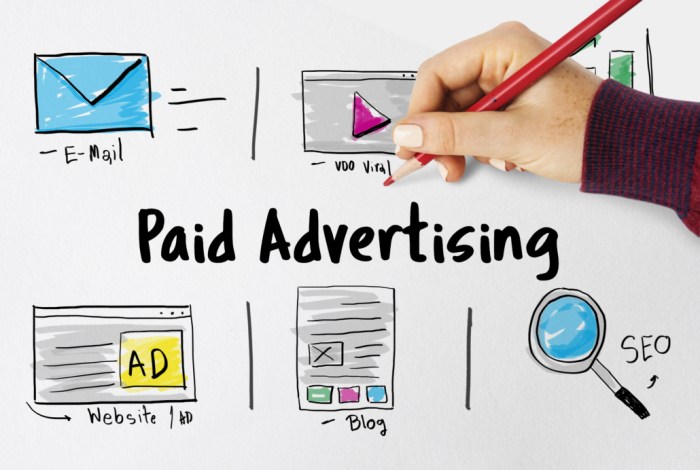
Source: lucemedia.net
Paid social media strategies are crucial for businesses aiming to achieve specific objectives. These strategies, coupled with well-defined tactics, allow businesses to effectively engage with their target audience, build brand awareness, generate leads, and drive sales. A comprehensive understanding of these strategies and tactics is essential for maximizing the return on investment (ROI) of paid social media campaigns.
Effective paid social media campaigns are built on a strong foundation of understanding target audiences and aligning campaign objectives with the specific needs of the business. This includes recognizing the unique strengths of different platforms and tailoring messaging accordingly. The strategies employed should be measurable, allowing for ongoing optimization and refinement based on performance data.
Common Paid Social Media Strategies for Different Business Objectives
Different business objectives necessitate distinct paid social media strategies. Brand awareness campaigns, for example, focus on increasing visibility and brand recognition, while lead generation campaigns aim to collect qualified leads. Sales campaigns, on the other hand, are designed to directly drive conversions and increase revenue. Each strategy requires a tailored approach to messaging, targeting, and ad creative.
Paid Social Media Tactics for Boosting Brand Awareness
Brand awareness campaigns often employ visually engaging content, including high-quality images and videos, to capture attention and foster interest. Consistent posting schedules and the use of relevant hashtags can also enhance reach and visibility. Collaborations with influencers or participation in industry events can further amplify brand exposure and generate buzz.
Strategies to Generate Leads and Drive Sales through Paid Social Media
Generating leads and driving sales often involves creating compelling calls to action (CTAs) within ad copy. This includes clear and concise instructions for users to take the desired action, such as visiting a website or filling out a form. Targeting specific demographics, interests, and behaviors is crucial to ensure the ads reach the most receptive audience. The use of retargeting ads, which re-engage users who have previously interacted with the brand, is also a valuable tool.
Importance of Audience Targeting in Paid Social Media Campaigns
Precise audience targeting is critical for maximizing the effectiveness of paid social media campaigns. Targeting options based on demographics, interests, behaviors, and connections allow businesses to ensure their ads reach the most relevant individuals. Effective targeting significantly reduces wasted ad spend by focusing resources on the most likely prospects.
Examples of Successful Paid Social Media Campaigns
Numerous successful paid social media campaigns demonstrate the effectiveness of these strategies. For instance, a retail company might leverage targeted ads to promote seasonal sales, highlighting specific products and discounts to a particular demographic. Similarly, a software company could utilize retargeting ads to re-engage users who have previously visited their website but haven’t converted. These campaigns illustrate how strategic targeting and creative ad copy can drive significant results.
Comparison of Strategies and Tactics
| Strategy | Objective | Common Tactics |
|---|---|---|
| Brand Awareness | Increase brand visibility and recognition | High-quality visuals, consistent posting, relevant hashtags, influencer collaborations, and industry events |
| Lead Generation | Collect qualified leads | Compelling calls to action, specific targeting, lead magnets, retargeting |
| Sales | Drive conversions and increase revenue | Clear CTAs, targeted promotions, limited-time offers, retargeting, and dynamic creative |
Platform Specifics: Paid Social Media Service
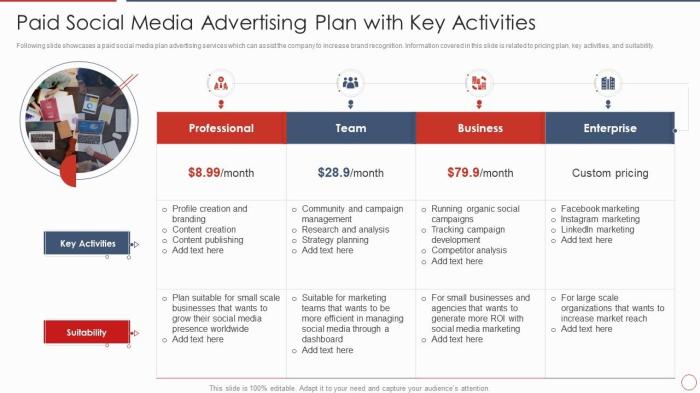
Source: slideteam.net
Paid social media strategies differ significantly across platforms, demanding tailored approaches for optimal results. Each platform boasts unique features, ad formats, and targeting options that cater to specific audience segments and marketing objectives. Understanding these nuances is crucial for maximizing ROI and achieving campaign goals.
Different platforms cater to different demographics and user behaviors. Facebook, for example, boasts a vast user base, making it ideal for broad reach campaigns. Instagram, on the other hand, is known for its visual focus, perfect for brands prioritizing aesthetic appeal and engagement. Twitter excels at real-time interactions, while LinkedIn serves professional networking and B2B marketing.
Facebook Paid Social Media
Facebook’s vast user base allows for highly targeted campaigns. Its diverse ad formats, including image, video, carousel, and collection ads, offer flexibility. Precise targeting options, such as demographics, interests, and behaviors, enable marketers to reach the ideal audience. However, the platform’s saturation can lead to higher costs compared to other platforms. The strength lies in its expansive reach and granular targeting. The weakness is the competitive environment and cost.
Instagram Paid Social Media
Instagram’s visual focus lends itself well to image and video ads. Carousel and story ads are particularly effective. Targeting options are comprehensive, mirroring Facebook’s, but often leaning towards visually-driven interests. The platform’s strong engagement metrics and visual nature are powerful tools. The challenge lies in the need for compelling visuals and creative ad copy.
Twitter Paid Social Media
Twitter’s real-time nature necessitates concise and engaging ad copy. Promoted tweets and trends are key ad formats. Targeting based on search and interests is readily available, but precision may be limited compared to other platforms. The platform’s focus on conversations and trending topics presents a unique opportunity for immediate impact. However, the rapid-fire nature of the platform requires timely and relevant content.
LinkedIn Paid Social Media
LinkedIn prioritizes professional networking and B2B marketing. Text-based ads and sponsored content are common. Detailed targeting options allow for precise targeting based on job title, industry, and company. The platform’s strength is in its professional environment, allowing for a focused reach. The weakness might be a narrower audience compared to Facebook or Instagram.
Comparison of Platform Strengths and Weaknesses
| Platform | Strengths | Weaknesses |
|---|---|---|
| Vast reach, granular targeting, diverse ad formats | High competition, potentially higher costs | |
| Strong visual engagement, effective storytelling, diverse ad formats | Requires visually compelling content, potentially higher costs | |
| Real-time engagement, trend-based opportunities | Limited targeting precision, potentially lower reach | |
| Professional networking, targeted B2B campaigns | Narrower audience, less visual engagement |
Platform-Specific Ad Formats and Use Cases
Choosing the right ad format is critical for achieving campaign goals. The table below provides examples of ad formats and their ideal applications.
| Platform | Ad Format | Ideal Use Case |
|---|---|---|
| Facebook/Instagram | Video Ads | Product demonstrations, storytelling, and brand awareness |
| Facebook/Instagram | Carousel Ads | Highlighting multiple products or features |
| Promoted Tweets | Driving immediate engagement, responding to trends | |
| Sponsored Content | Thought leadership, industry insights, and building professional relationships |
Measuring Results and ROI
Understanding the return on investment (ROI) of your paid social media campaigns is crucial for optimizing future strategies and demonstrating value. Effective measurement allows you to identify what’s working, what isn’t, and refine your approach for maximum impact. Tracking key metrics and calculating ROI empowers data-driven decision-making, ultimately leading to higher engagement and conversions.
A strong understanding of campaign performance allows for adjustments in real-time, ensuring your budget is allocated efficiently and your objectives are met. This process also provides valuable insights into audience preferences and trends, which can be instrumental in long-term planning and future campaign development.
Methods for Measuring Campaign Effectiveness
Several methods are available to assess the success of your paid social media campaigns. A crucial aspect is the selection of relevant metrics, aligning them with your specific campaign goals. Analyzing website traffic, click-through rates, and conversions provides quantifiable data to understand user engagement and the impact of your advertising. This detailed analysis allows you to identify areas for improvement and optimize your strategies.
Tracking Key Metrics
Tracking key metrics like reach, engagement, and conversions is essential to evaluate the performance of your campaigns. These metrics offer insights into how well your content resonates with your target audience and drives desired actions.
- Reach measures the number of unique users who saw your content. High reach indicates broad exposure, but it’s not sufficient on its own. Engagement and conversions are also important for determining campaign effectiveness.
- Engagement encompasses interactions like likes, comments, shares, and retweets. A high engagement rate signifies that your content is captivating and resonates with your target audience, increasing the likelihood of conversions.
- Conversions represent the desired actions from your audience, such as purchases, sign-ups, or form submissions. Tracking conversions directly ties your social media efforts to tangible business outcomes.
Calculating Return on Investment (ROI)
Calculating the ROI of your paid social media campaigns provides a clear picture of their profitability. It involves comparing the revenue generated from the campaign to the cost of running it.
ROI = (Net Profit / Cost of Investment) * 100%
For example, if a campaign generated $5,000 in revenue and cost $1,000 to run, the ROI would be (4000 / 1000) * 100% = 400%. This high ROI demonstrates the campaign’s profitability and effectiveness. Other factors, such as brand awareness and customer loyalty, are also valuable outcomes to consider.
Importance of A/B Testing
A/B testing is critical for optimizing paid social media campaigns. It involves running two versions of an ad (or other creative elements) and comparing their performance. This method helps identify which version performs better in terms of engagement, reach, or conversions, allowing you to refine your strategy and maximize ROI. Consistent A/B testing ensures that your campaigns are constantly evolving to better meet the needs of your target audience.
Essential Metrics for Evaluating Campaign Performance
The table below Artikels’ essential metrics for evaluating paid social media campaign performance, allowing you to measure and improve your campaign strategies.
| Metric | Description | How to Measure |
|---|---|---|
| Reach | Number of unique users who saw the content. | Social media platform analytics. |
| Engagement Rate | Percentage of users who interacted with the content. | Social media platform analytics (likes, comments, shares). |
| Click-Through Rate (CTR) | Percentage of users who clicked on an ad or link. | Social media platform analytics. |
| Conversion Rate | Percentage of users who completed a desired action. | Website analytics, CRM data. |
| Cost Per Click (CPC) | The cost of each click on an ad. | Social media platform analytics. |
| Cost Per Acquisition (CPA) | Cost of acquiring each new customer. | Social media platform analytics, CRM data. |
Trends and Future of Paid Social Media Services
Paid social media is constantly evolving, driven by technological advancements and shifting user behaviors. Staying ahead of the curve is crucial for marketers and advertisers to maximize their return on investment (ROI). This section examines the emerging trends, the impact of AI, and the evolution of platform advertising offerings, providing insight into the future landscape of paid social media.
Emerging Trends in Paid Social Media
The paid social media landscape is dynamic, with new features and functionalities emerging regularly. This evolution is driven by the need to meet evolving user expectations and maximize advertising effectiveness. Several key trends are shaping the future of paid social media.
- Increased focus on privacy and data security: Platforms are increasingly emphasizing user privacy, leading to changes in data collection and targeting practices. Marketers need to adapt to these evolving regulations and privacy-centric approaches to maintain effective campaigns.
- Emphasis on video and interactive content: Video continues to dominate user engagement on social media, driving the need for more sophisticated video advertising formats and interactive elements. Brands must invest in high-quality video production and engaging interactive experiences to resonate with audiences.
- Rise of short-form content and ephemeral content: Short-form video and ephemeral content formats, such as Instagram Reels and Stories, are gaining significant traction. Advertisers need to understand these formats and tailor their strategies to leverage their potential.
- AI-powered automation and personalization: Artificial intelligence is increasingly used to automate tasks, personalize ad targeting, and optimize campaigns. This automation streamlines the process and delivers more effective results.
Role of Artificial Intelligence (AI) in Paid Social Media
AI is revolutionizing paid social media by automating tasks, enhancing targeting, and optimizing campaign performance. AI-driven insights and predictive analytics are critical in understanding user behavior and tailoring campaigns to individual preferences.
- Automated ad creation and optimization: AI algorithms can analyze data to automatically create and optimize ad creatives, ensuring that ads are relevant and engaging for target audiences. This reduces manual effort and allows for more efficient campaign management.
- Advanced targeting and audience segmentation: AI allows for highly granular targeting, enabling advertisers to reach specific demographics, interests, and behaviors with precision. This reduces wasted ad spend and increases ROI.
- Predictive analytics for campaign performance: AI can predict campaign performance based on historical data and current trends, allowing for proactive adjustments and optimization strategies. This approach allows for dynamic adaptation and ensures better outcomes.
Evolution of Social Media Platform Advertising Offerings
Social media platforms are continuously evolving their advertising offerings to meet the needs of businesses and enhance user experiences.
- Introduction of new ad formats: Platforms regularly introduce new ad formats to engage users and capture attention, including interactive ads, immersive experiences, and shoppable posts. This keeps the ads fresh and exciting for users.
- Integration of commerce features: Platforms are increasingly integrating e-commerce features into their advertising offerings, allowing businesses to sell products directly through ads and streamline the purchase process. This direct-to-consumer approach allows businesses to reduce reliance on third-party platforms.
- Emphasis on privacy-focused targeting: In response to user privacy concerns, platforms are evolving their targeting strategies to provide more privacy-conscious options and better user control over data collection. This allows for more targeted advertising while respecting user preferences.
Importance of Keeping Up with Trends
Staying current with the latest trends in paid social media is essential for achieving optimal results. Adapting to changes in platform algorithms, user behavior, and advertising formats is vital for maintaining effectiveness.
Current Trends and Predicted Future Directions
| Current Trend | Predicted Future Direction |
|---|---|
| Increased focus on video and interactive content | More immersive and interactive ad experiences, incorporating augmented reality (AR) and virtual reality (VR) technologies. |
| Rise of short-form content and ephemeral content | Continued growth in short-form video and ephemeral content formats, with increased focus on user engagement and authenticity. |
| AI-powered automation and personalization | Greater sophistication in AI algorithms, leading to more personalized and automated ad experiences, including predictive analytics and dynamic creative optimization. |
| Emphasis on privacy and data security | Further development of privacy-focused advertising tools and technologies, with a greater emphasis on user consent and data transparency. |
Ethical Considerations
Paid social media marketing, while offering powerful tools for reaching audiences, carries significant ethical responsibilities. Maintaining trust and transparency is paramount, especially when leveraging user data and engaging with diverse audiences. Ethical considerations ensure campaigns resonate positively and avoid alienating potential customers or harming the platform’s reputation.
Data Privacy and User Consent
Data privacy and user consent are fundamental ethical concerns in paid social media. Platforms must adhere to stringent regulations like GDPR and CCPA, ensuring clear and concise communication about data collection practices. Users must explicitly consent to the use of their data for targeted advertising. Failure to obtain informed consent can lead to reputational damage and legal repercussions for both the advertiser and the platform. Transparent data policies and easily accessible consent mechanisms are essential for maintaining ethical standards.
Potential Ethical Dilemmas and Mitigation Strategies, Paid social media service.
Several ethical dilemmas can arise in paid social media marketing. Misrepresenting products or services, using misleading language, or employing manipulative tactics to influence user behavior are examples. Targeting vulnerable populations with inappropriate advertising, creating campaigns that promote harmful stereotypes, or exploiting sensitive issues for commercial gain are other potential pitfalls. Mitigating these dilemmas requires careful campaign planning, thorough fact-checking, and adherence to ethical guidelines. Developing clear internal policies and procedures that prioritize transparency and user welfare is crucial.
Promoting Transparency and Authenticity
Promoting transparency and authenticity in paid social media campaigns is vital for building trust. Disclosing sponsored content, using verifiable claims, and avoiding misleading language are crucial elements. Brands must maintain authenticity in their messaging, avoiding exaggerated promises or deceptive practices. Authenticity and transparency are essential for long-term brand success and customer loyalty.
Table of Potential Ethical Concerns in Paid Social Media
| Ethical Concern | Description | Suggested Solution |
|---|---|---|
| Misleading Content | Presenting false or misleading information about products or services | Verify all claims with evidence, use clear and accurate language, and disclose any limitations or caveats. |
| Targeting Vulnerable Populations | Using paid social media to target individuals or groups who are particularly susceptible to manipulation or harm | Avoid targeting children, individuals with mental health conditions, or those with specific vulnerabilities. Prioritize responsible advertising and ensure campaigns align with ethical marketing principles. |
| Exploiting Sensitive Issues | Using social issues, tragedies, or personal hardships for commercial gain | Avoid using sensitive topics for profit. Focus on promoting solutions rather than exploiting problems. |
| Lack of Transparency | Failing to disclose sponsored content or affiliate relationships | Identify sponsored posts, reviews, and affiliate links. Use disclosure tags and be upfront about any financial incentives. |
| Data Privacy Violations | Collecting and using user data without consent or proper disclosure | Adhere to data privacy regulations, provide clear and concise privacy policies, and obtain explicit consent before using user data for targeted advertising. |
Closure

Source: fastcapital360.com
In conclusion, navigating the world of paid social media services requires a multifaceted approach. From understanding the different platforms and strategies to measuring campaign effectiveness and embracing ethical considerations, this guide equips businesses with the knowledge needed to maximize their social media ROI. Staying updated on trends and adapting to platform changes is essential for long-term success.

